French press and filter (traditionally by hand or relaxed in the machine) are two of the most common methods we and our customers use to prepare their lupin coffee. Both methods of brewing this caffeine-free coffee alternative are uncomplicated, quick and can be made using classic coffee accessories that many people already have at home.
We'll show you how to get the best out of your next cup of coffee with just a few small adjustments. Loffee out of your next cup. So let's take a look at which roast and grind we should use for the French press or filter and how the exact brewing process works best.
Filter & French Press - step by step guide:
 Follow the 20/20 rule: 20% less grind with a 20% coarser grind than for "normal" coffee |
Roasting the lupine correctly
As is so often the case with food, the same applies here: The right thing is what you like. Each of our three lupin roasts is suitable for preparation in a French press and in a filter.
From "normal" coffee, you are probably familiar with special roasts for the respective preparation method (Here is a good overview on almost all variants). This is because, for example, the CO2 content in the bean changes with the degree of roasting, which has a strong effect on the behavior in the grinder and also, for example, in the portafilter. Lupine, on the other hand, does not have this peculiarity.
As roasted lupins therefore behave very differently to coffee during preparation (they contain little to no acidity and much more protein than coffee, regardless of the roast), no special roasting is required for the respective preparation method.
In summary, this means that we roast only for the taste with different temperatures. "The Intense" for example, has a stronger & more chocolaty taste due to its roasting than "The Mild"which tends to be somewhat lighter and sweeter. Both can be prepared in an espresso maker as well as in a French press or filter. The result only differs in taste, so you should only choose based on this characteristic.
It's best to try all three varieties with our inexpensive lupin tasting pack and find the right one for you.
The right grind for lupin coffee
Choosing the right roast is just one facet that determines your Loffee even better. The grind of your lupin coffee also has a significant influence on the taste of the drink.
If you opt for our ground Loffee you can simply skip this paragraph. We have selected the grind so that you can use the lupins both in the filter and in the press plunger jug.
In general, you should always choose a slightly coarser grind for your lupine grinder than you would for coffee. This is partly because lupine grinds differently (it is less brittle) and partly because it swells much more due to its high protein content. A coarser grind prevents too little water from passing through, especially in the filter. In our Brew-Guide you will find a summary of the special features of lupin coffee and what you need to bear in mind.
 |
 |
French press grind
The French press stamp pot works in a similar way to filter coffee makers, but without a paper filter. Instead, you pour the ground lupin coffee into a metal or glass jug, pour in hot water and leave to infuse for several minutes. Then press down the French press plunger with its sieve and serve your decaffeinated coffee. Loffee.
As French press coffee only requires a rather coarse-meshed metal sieve, a slightly coarser grind, similar to that of sea salt, is generally recommended. A coarser grind produces fewer fine particles, which you probably don't want in your cup (completely harmless, but not the desired sensory experience for some). We'll tell you below how you can prevent this problem even with slightly finer ground lupin coffee.
Grind size for the filter
For preparation in the filter, on the other hand, you should grind the lupin coffee finer; table salt is a good comparison here. Due to the stronger filtering and the shorter contact time, we need more surface area in the ground coffee so that the flavor of the drink can develop better.
By the way: it makes a difference not only for the environment, but also in terms of taste, whether you use a paper filter or a permanent filter made of stainless steel because: Paper retains most of the lupine oils and microscopic suspended particles. The stainless steel filter with its somewhat coarser filter mesh does not do this, the result: your Loffee has a little more body, making it a little "fuller" in the mouth. Incidentally, preparation in a French press has the same effect.
Brewing in the French press
Use a heaped teaspoon of lupin coffee per cup. Pour hot water (at a temperature of around 100 degrees, i.e. boiling) into the French press and let the coffee brew. Loffee brew for 3-5 minutes before pressing down the filter plunger.
Avoid sediment
As mentioned above, when preparing our popular coffee alternative in the French press, you may end up with a fine sediment at the bottom of your cup. Loffee at the end of your cup.
This can be avoided by not pressing the plunger of your French press all the way down, but stopping a finger's width above the grounds and waiting another minute. As lupin coffee does not become bitter, this waiting time does no harm at all. During this time, the suspended particles of lupin coffee whirled up by pressing the plunger down will settle again.
If you now keep a steady hand when pouring, you will end up with a Loffee without any sediment in the cup.
Brewing in the filter
The filter, both by hand and with a machine, is a quick and easy way to prepare lupin coffee. We use a heaped teaspoon Loffee per cup. (Caution: never use more than 30g per batch. Lupine swells so much that very few filters will allow enough water to pass through above this amount).
The following steps are no longer relevant when using the automatic filter machine.
Optional first step when using paper filters (alternative: metal filter): The filter bag is inserted into the manual filter beforehand and a little hot water is poured over it to wash out the taste of the paper.
Now pour about twice as much water evenly onto the powder so that the lupin coffee can swell a little (coffee connoisseurs call this "blooming"). After 30 seconds, the remaining amount of water is poured slowly and evenly over the ground coffee.
Voilà - the delicious lupin coffee is ready! 
Conclusion: Simple, quick and inexpensive
Preparing lupin coffee in a French press or filter is a wonderful morning ritual. It is precisely this aspect that we appreciate so much about lupine: We can do everything with it that we already know from coffee, just caffeine-free.
If you want to know more about the health aspects of lupin coffee (apart from the caffeine), we have the right article for you here.
Of course, what interests us most now is: How do you prepare your Loffee actually prefer to prepare? We look forward to your comment!



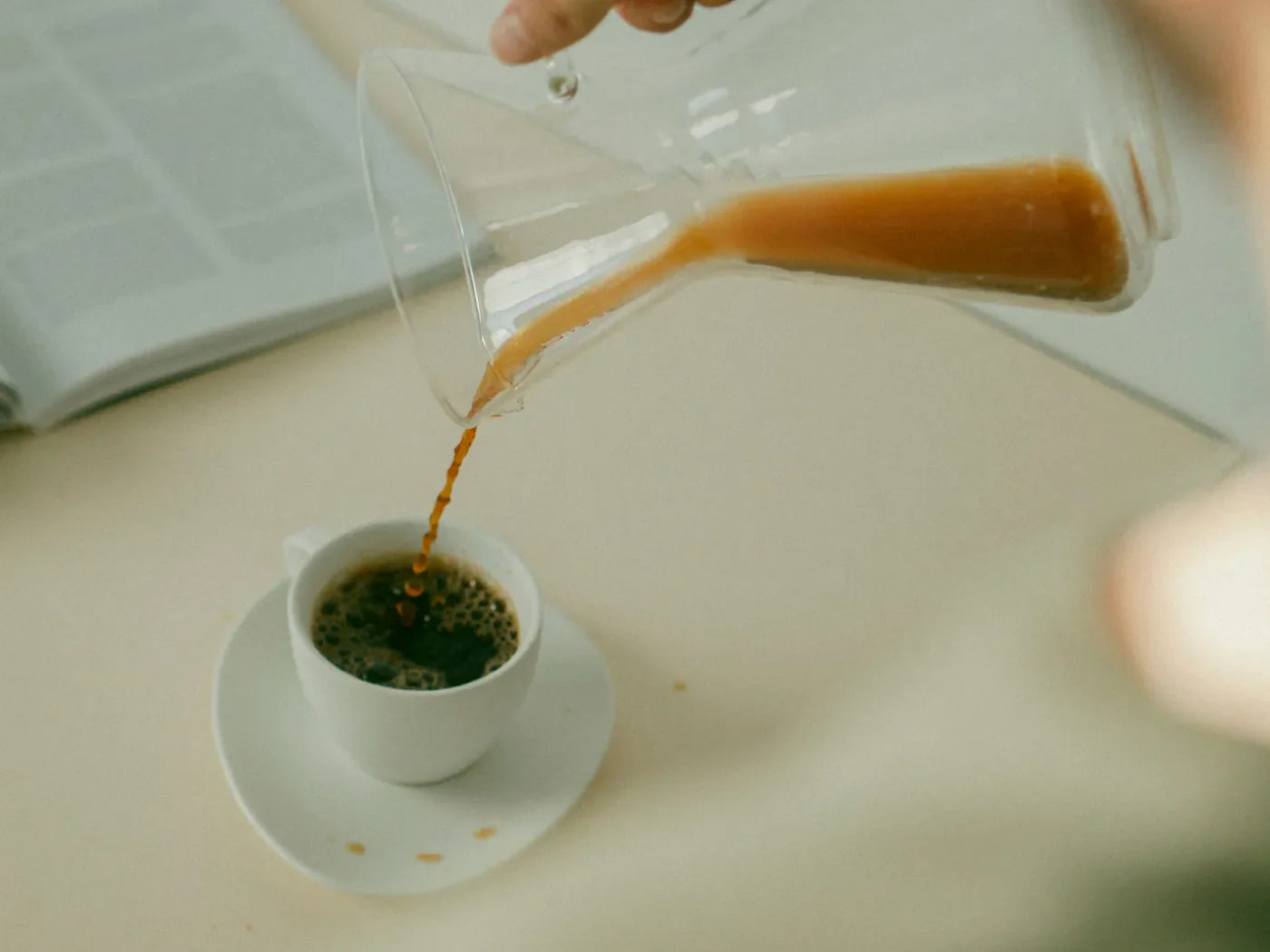





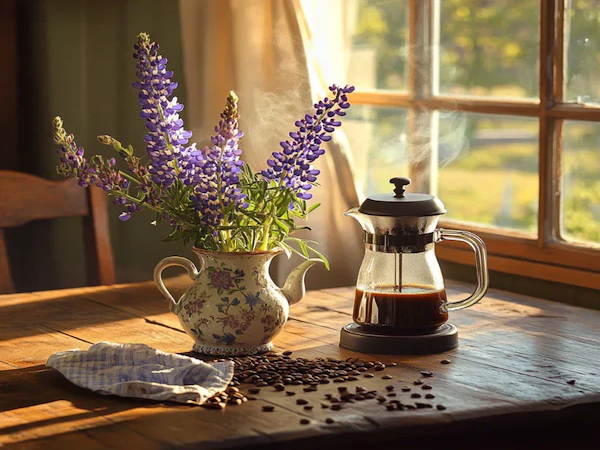

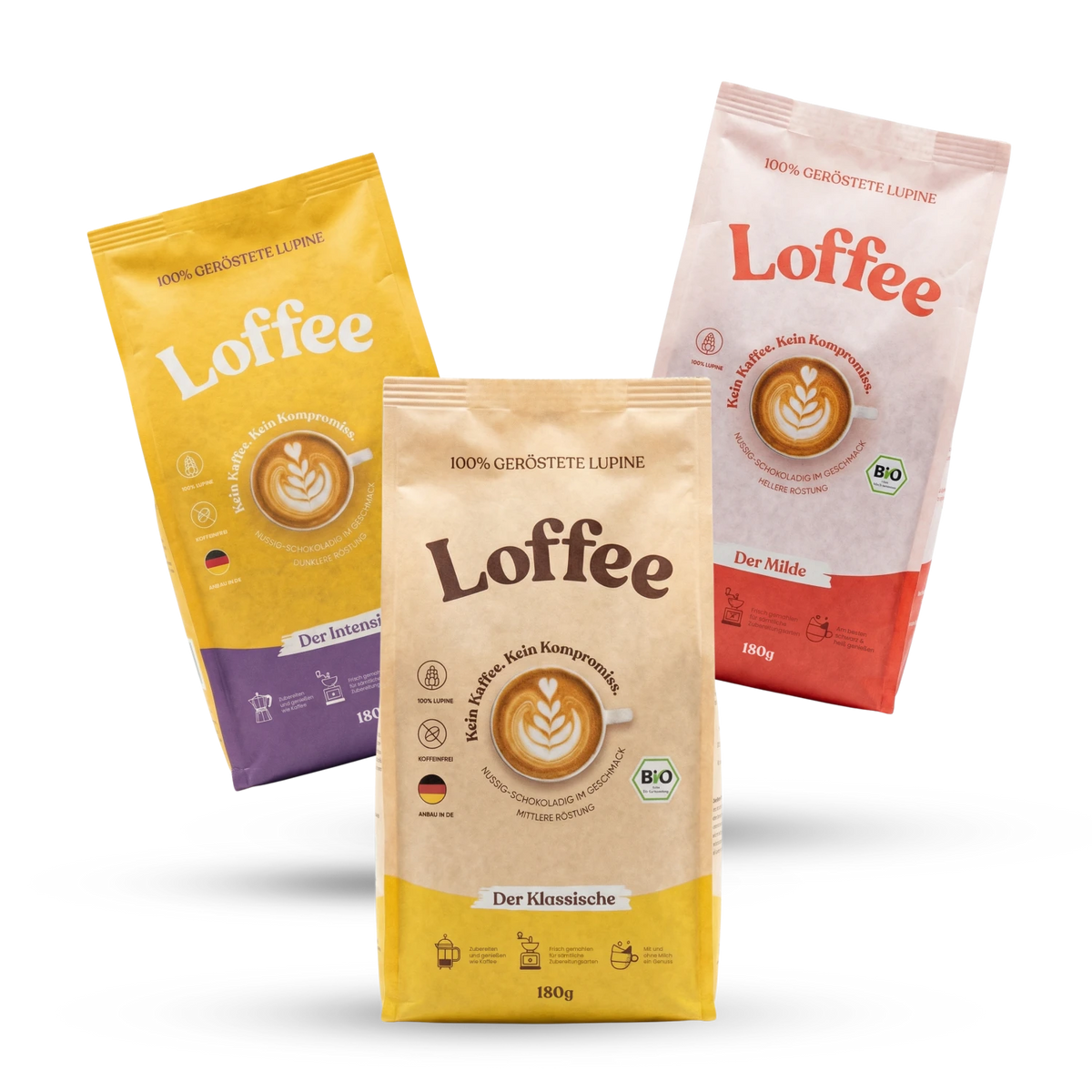
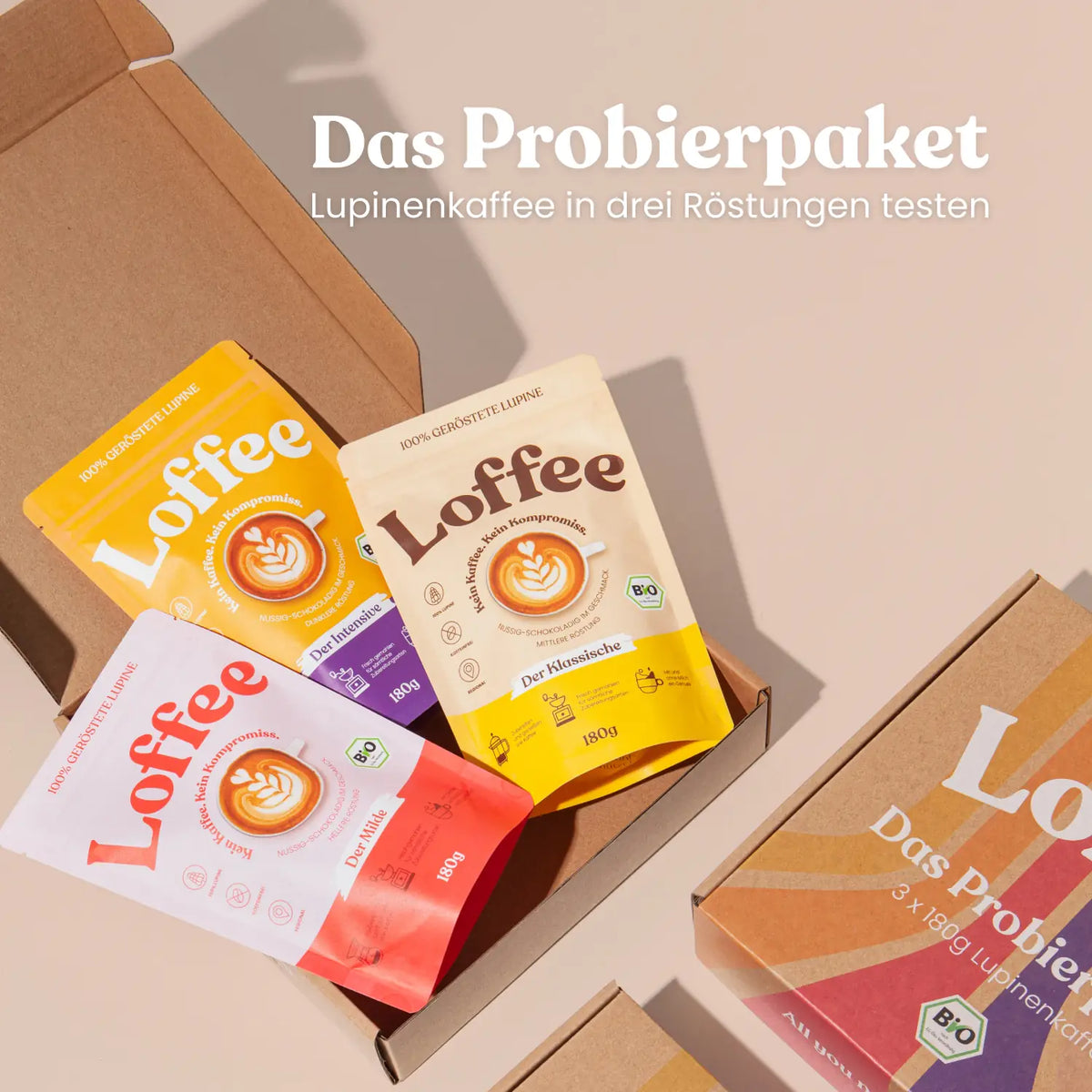
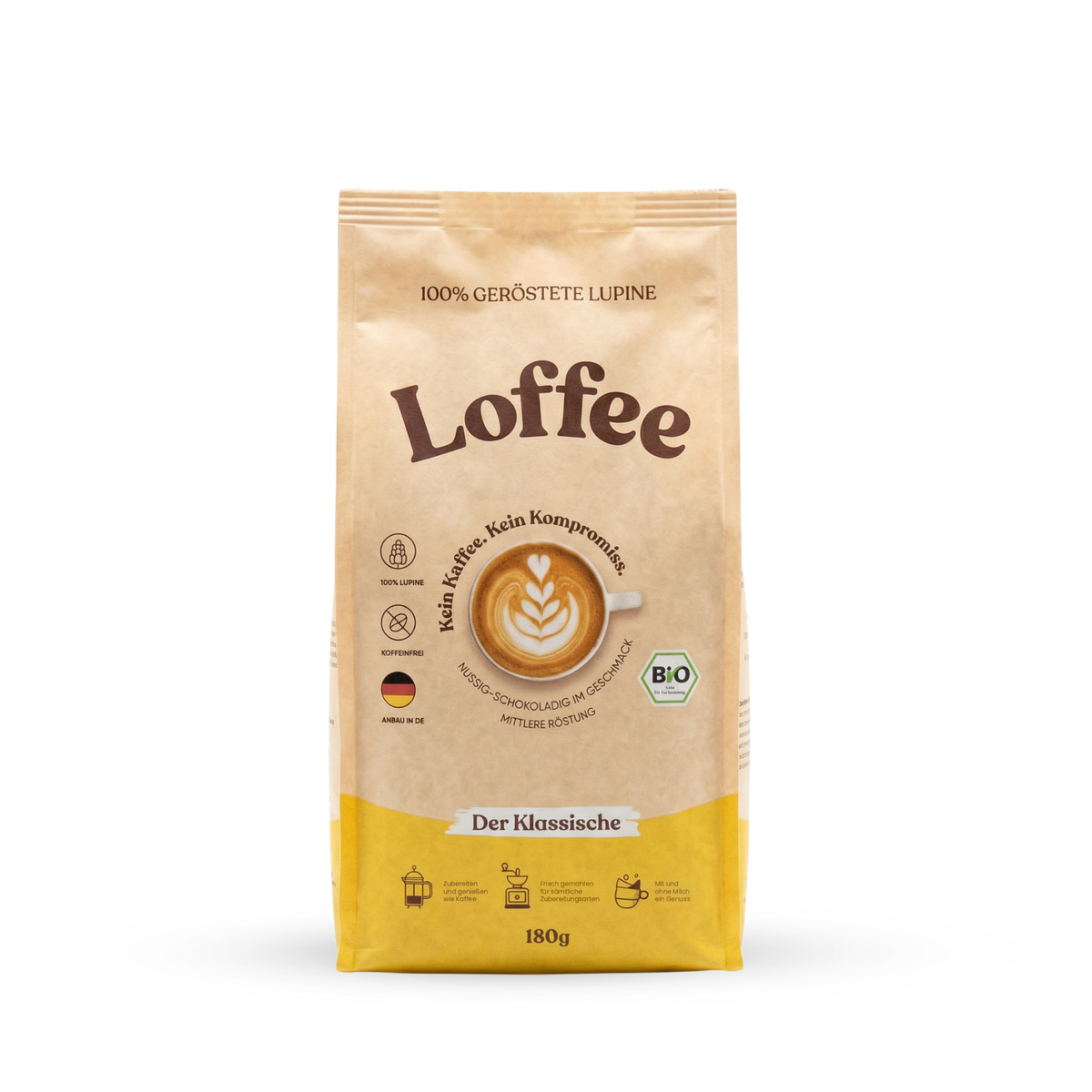

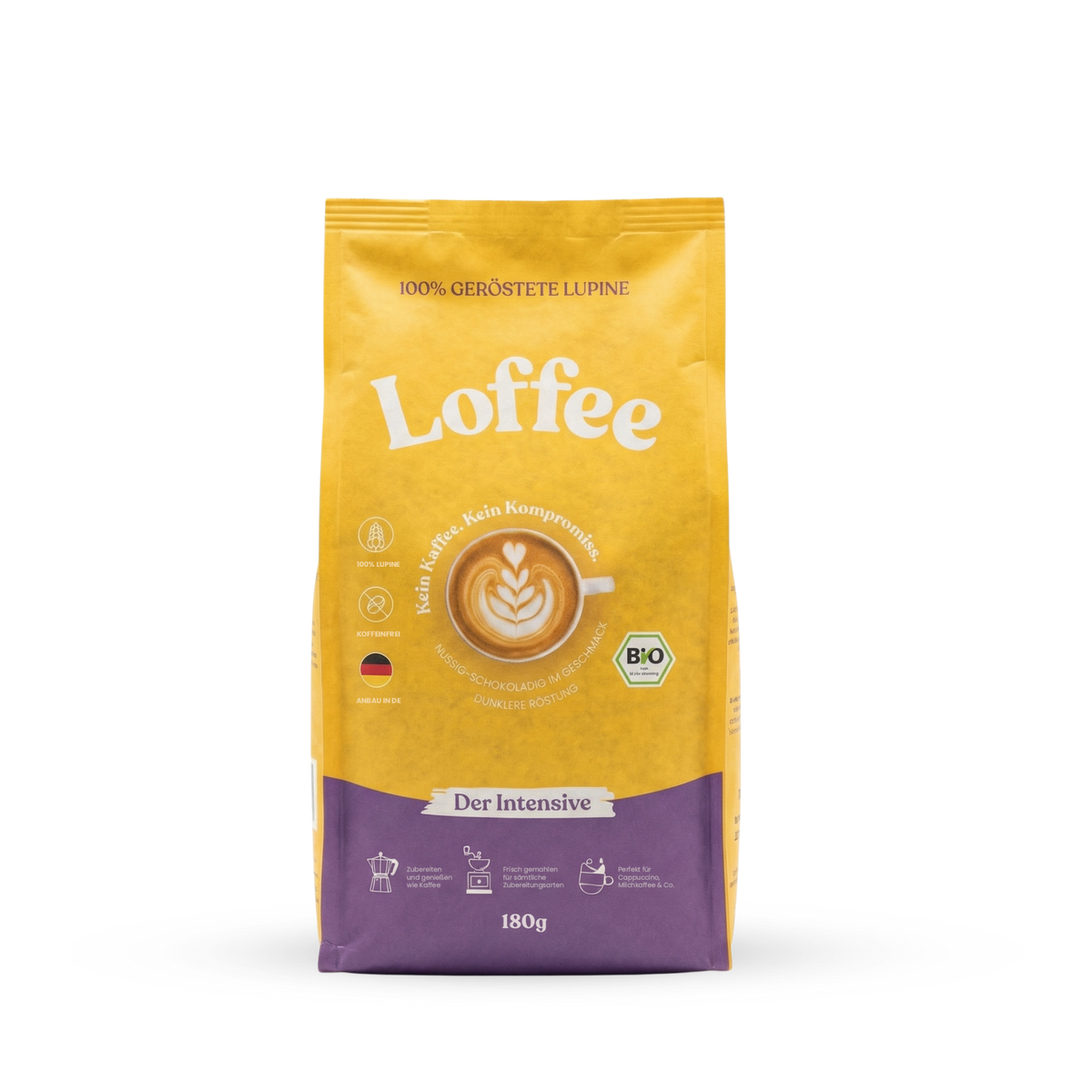
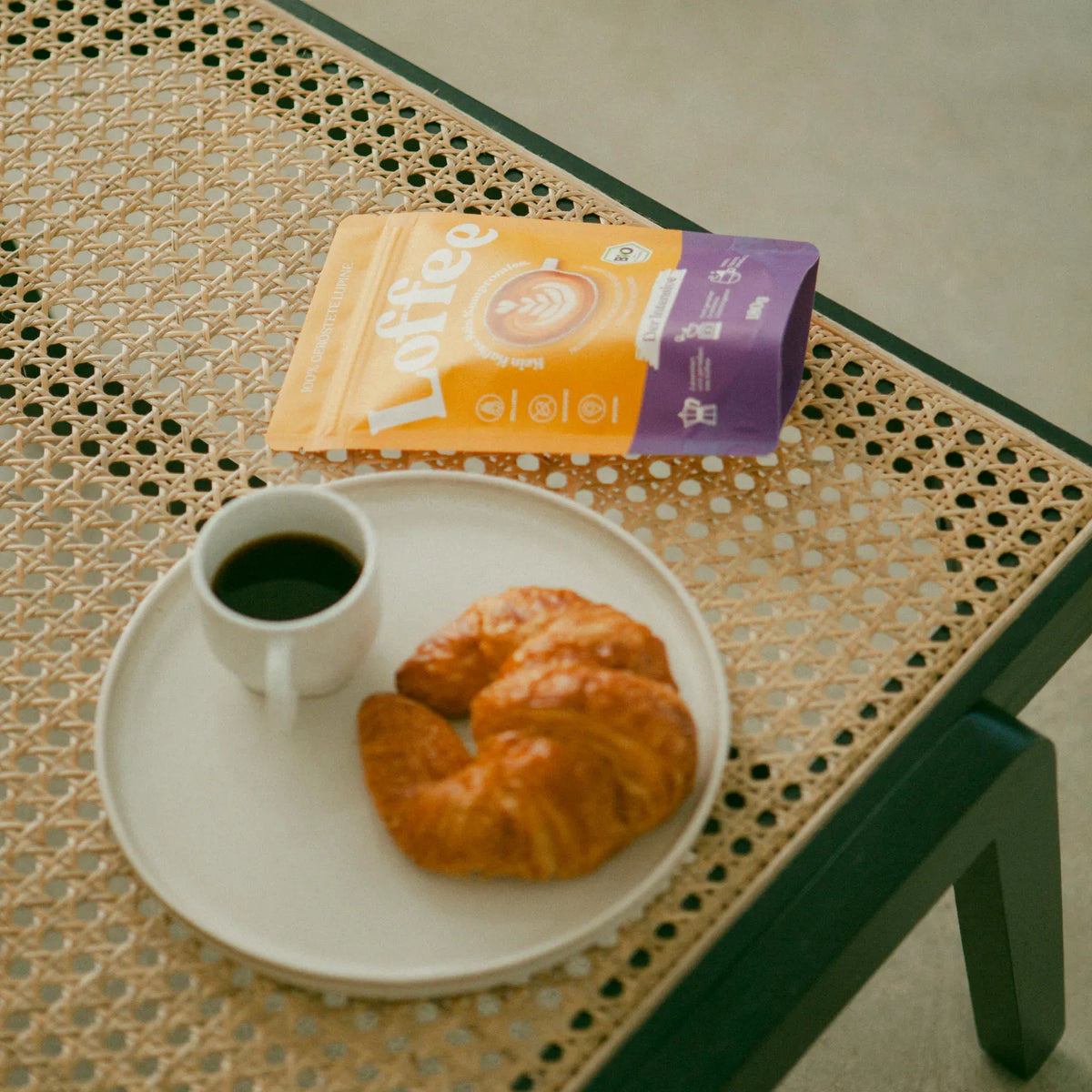

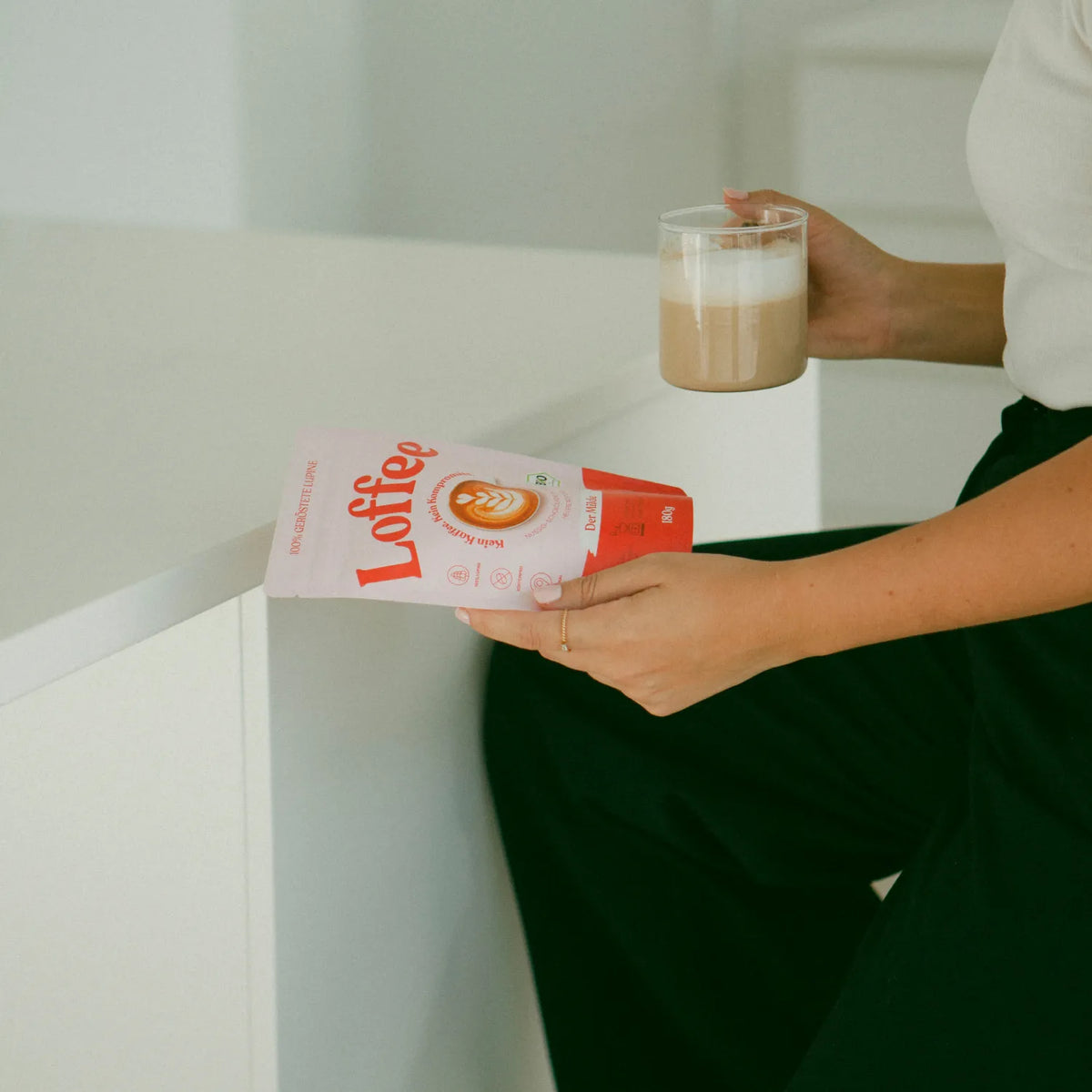

1 Comment
Lesser Stephanie
Ich verwende ein festes und offenes Teesieb. Mit Mirkofeinen Netz. Da schmeckt mir der Kaffee am besten und ich bereite ihn gleich so in der Tasse zu. 😊
Ich verwende ein festes und offenes Teesieb. Mit Mirkofeinen Netz. Da schmeckt mir der Kaffee am besten und ich bereite ihn gleich so in der Tasse zu. 😊